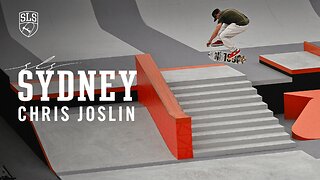Premium Only Content

Vasco da Gama took Portuguese fleet to India to open the sea route to Asia but ended in Mozambique
In 1495, King Manuel I ascended to the throne of Portugal, which led to a significant shift in the balance of power within the Portuguese court. This shift favored the friends and patrons of the da Gama family. Concurrently, a previously neglected project was revived: the ambitious plan to send a Portuguese fleet to India. The goal was to establish a sea route to Asia, thereby circumventing the Muslim monopoly on trade with India and other eastern states. Despite having little relevant experience, Vasco da Gama was appointed to lead this critical expedition for reasons that remain unknown. Vasco da Gama set sail from Lisbon on July 8, 1497, commanding a fleet of four vessels. These included two medium-sized three-masted sailing ships, each around 120 tons, named the “São Gabriel” and the “São Rafael”; a 50-ton caravel named the “Berrio”; and a 200-ton storeship. Accompanying da Gama's fleet were three interpreters—two Arabic speakers and one who spoke several Bantu dialects. The fleet also carried padrões (stone pillars) to establish marks of discovery along their route.After passing the Canary Islands on July 15, Vasco da Gama's fleet reached São Tiago (Santiago) in the Cape Verde Islands on July 26, where they remained until August 3. To avoid the strong currents of the Gulf of Guinea, da Gama took a long detour through the South Atlantic before attempting to round the Cape of Good Hope. The fleet arrived at Santa Helena Bay (in modern South Africa) on November 7. However, unfavorable winds and adverse currents delayed the rounding of the Cape until November 22. Three days later, on November 25, da Gama anchored in Mossel Bay, where he erected a padrão on an island and ordered the storeship to be broken up. Sailing again on December 8, the fleet reached the coast of Natal on Christmas Day. On January 11, 1498, they anchored for five days near the mouth of a small river between Natal and Mozambique, which they named the Rio do Cobre Copper River. On January 25, in what is now Mozambique, they reached the Quelimane River, which they called the Rio dos Bons Sinais (the River of Good Omens), and erected another padrão. By this time, many of the crew members were suffering from scurvy, so the expedition rested for a month while the ships were repaired.On March 2, the fleet reached the Island of Mozambique. The inhabitants initially believed the Portuguese to be fellow Muslims. During their stay, Vasco da Gama discovered that the locals traded with Arab merchants and that there were four Arab vessels in port, loaded with gold, jewels, silver, and spices. Da Gama was also informed that Prester John, the legendary Christian ruler, supposedly lived in the interior and controlled many coastal cities
-
 LIVE
LIVE
Candace Show Podcast
1 hour agoOH SNAP! Trump Just Gave Elon Musk and Vivek Their Own Department. | Candace Ep 102
9,375 watching -
 LIVE
LIVE
In The Litter Box w/ Jewels & Catturd
19 hours agoTrump Returns! | In the Litter Box w/ Jewels & Catturd – Ep. 690 – 11/13/2024
5,315 watching -
 5:35
5:35
SLS - Street League Skateboarding
4 days agoChris Joslin 3rd Place SLS Sydney 2024 | Best Tricks
4.74K2 -
 29:15
29:15
Breaking Points
6 hours agoTrump Taps FOX HOST For SecDef, Huckabee For Israel Amb
1.72K5 -
 13:53
13:53
DeVory Darkins
17 hours ago $2.38 earnedMSNBC and CNN EXPLODE as Elon & Vivek Prepare to DISMANTLE the GOV
4.3K31 -

Darkhorse Podcast
3 hours agoThe 251st Evolutionary Lens with Bret Weinstein and Heather Heying
14.5K34 -
 1:31:54
1:31:54
The Quartering
4 hours agoTrump Wages WAR On Deep State, Twitch Is Collapsing, New Diddy Tapes, CIA LEAKS & More
74.9K33 -
 16:12
16:12
Mike Tyson
19 hours ago $2.70 earnedDavid Blaine, Al Pacino, Mike Tyson & VEGAS | BEHIND THE MIKE #003
11.6K3 -
 1:08:52
1:08:52
Russell Brand
4 hours agoTrump Appoints Elon & Vivek To DOGE As Elites LOSE THEIR MINDS + CNN & MSNBC In FIRE SALE! - SF492
135K249 -
 LIVE
LIVE
Mally_Mouse
4 hours agoLet's Yap About It - LIVE!
266 watching